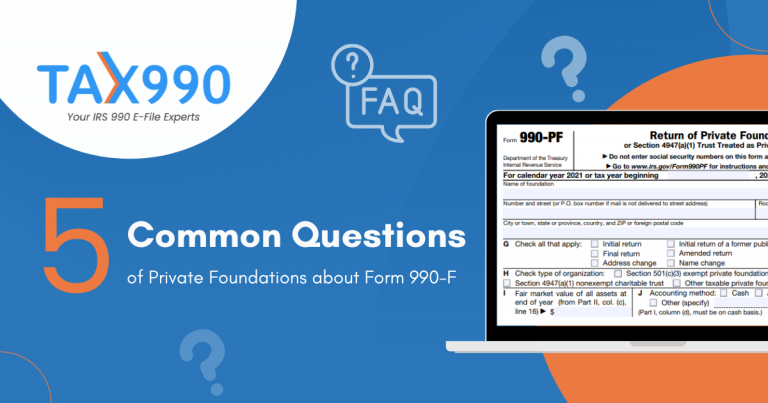Estimated reading time: 20 minute(s)
There are so many very specific parts to filing a 990 series return. In addition to the 990 return itself, there are also often additional schedules required to provide more specific information on a topic indicated on the 990 return itself.
16 different schedules may be associated with the 990 series return. Your organization does not have to complete all the schedules or even all the parts of the necessary schedules, you only complete the information that pertains specifically to your organization. Let’s look at all the different schedule options, what they are for, and which forms they are associated with.
A Breakdown of IRS 990 Schedules
Schedule A is used to provide information on public charity status and public support. This helps the IRS know that you are following the support guidelines of your
organizations exempt status. 990 and 990-EZ filers may have to complete this form.
Schedule B is used to provide specific information on your organization’s contributors who gave more than $5000. Filers of 990,990-EZ and 990-PF may have to complete this form.
Schedule C is used to furnish additional information on political campaign activities or lobbying activities. 990 and 990-EZ filers may have to complete this form.
Schedule D is used to provide the required reporting for donor-advised funds, conservation easements, certain art and museum collections, escrow or custodial
accounts or arrangements, endowment funds, and supplemental financial information.
990 filers may have to complete this form.
Schedule E is used to report various details about the school’s policies. 990 and 990-EZ filers may have to complete this form.
Schedule F is used to provide information on activities conducted outside the United
States by the organization at any time during the tax year. 990 filers may have to complete this form.
Schedule G is used to report professional fundraising services, fundraising events, and gaming.990 and 990-EZ filers may have to complete this form.
Schedule H is used to provide information on the activities and policies of, and community benefit provided by, its hospital facilities and other non-hospital health care facilities that it operated during the tax year. This includes facilities that operate either directly or through disregarded entities or joint ventures.990 filers may have to complete this form.
Schedule I is used to provide information on grants and other assistance made by the filing organization during the tax year to domestic organizations, domestic governments, and domestic individuals.990 filers may have to complete this form.
Schedule J is used by an organization to report compensation information for certain officers, directors, individual trustees, key employees, and highest compensated employees, and information on certain compensation practices of the organization.990 filers may have to complete this form
Schedule L is used to report on financial transactions or arrangements between the organization and disqualified person(s) under section 4958 or other interested persons.
Schedule L is also used to determine whether a member of the organization’s governing body is an independent member. 990 and 990-EZ filers may have to complete this form.
Schedule M is used to report the types of noncash contributions received during the year by the organization and certain information regarding such contributions. The schedule requires reporting of the quantity and the reported financial statement amount of noncash contributions received by type of property. .990 filers may have to complete this form.
Schedule N is used when reporting that the organization is going out of existence or disposing of more than 25% of its net assets through sale, exchange, or other disposition. 990 and 990-EZ filers may have to complete this form.
Schedule O provides the IRS with narrative information required for responses to specific questions. It allows organizations to supplement information reported on Form 990 or 990-EZ. It is not used to supplement responses to questions in other schedules
Schedule R is used to provide information on related organizations, on certain transactions with related organizations, and on certain unrelated partnerships through which the organization conducts significant activities. 990 filers may have to complete this form.
That is a lot of information but keep in mind, that not every schedule will be required for your organization, and with Tax990, you won’t have to determine which schedule is required. Based on the information you provide on your return, the necessary schedules will be generated for you. Let’s talk a little bit about the most common schedules.
A Closer Look at the Most Common Schedules
Schedule A for Public Charity Status and Public Support.
Schedule A is required by any section 501(c)(3) organization (or organization treated as such) that files a Form 990-EZ or 990. This schedule reports the Reason for Public Charity Status, Public Support, Total, Support, Public Support Percentage, and Supporting organization details.
You will begin by choosing the category on page one of schedule A that meets the reason for your organization’s public charity status, then you will be prompted to complete the associated section of the schedule.
For example, if you choose that your organization has public charity status because it receives a substantial part of its public support from a governmental unit or the general public (line 7) you will be prompted to complete Part II of Schedule A explaining the values of that revenue received that fall into that category. This will calculate your public support percentage.
Schedule B is for contributors
Every organization must complete Schedule B, unless it certifies that it doesn’t meet the filing requirements of this schedule on the 990 series return. On Schedule B, you are reporting information on the Organization Type such as the General and/or Special Rule that applies to the organization, if an organization isn’t covered by the General Rule and/or the Special Rules it may not need to complete Schedule B.
Additionally, you may not meet the filing requirements if your organization does not receive more than $5000 in contributions from a single contributor. You are reporting the contributor information including the Contributors name, address, total contributions, and type of contribution
Schedule N
Schedule N is for Liquidation, Termination, Dissolution, or Significant Disposition of Assets. An organization will file Schedule N to Report going out of existence or disposing of more than 25% of its net assets through sale, exchange, or other disposition.
Schedule N will require information about the details on the transactions of Liquidation, Termination, or Dissolution including a description of assets, date, FMV, method of determining FMV, EIN of recipient, name, and address of the recipient, IRC section of recipient
Schedule O
Schedule O is used to report Supplemental Information to Form 990 or 990-EZ
An organization should use Schedule O, rather than separate attachments, to provide the IRS with narrative information required for responses to specific questions on Form 990 or 990-EZ, and to explain the organization’s operations. It allows organizations to supplement the information reported.
Don’t use Schedule O to supplement responses to questions in other schedules of Form 990 or 990-EZ.
Save Time: Tax990 Autogenerates Your 990 Schedules!
As mentioned, Tax990 helps you determine what schedules and what parts of the schedules apply to your organization based on the information you provide on the 990 return itself. We also offer an internal audit to help confirm all IRS-required information has been provided.



